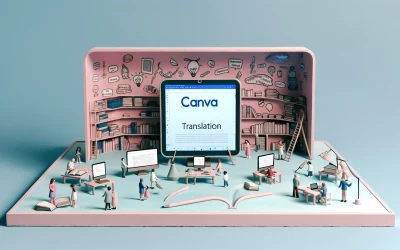Proposal writing is a crucial skill that requires clear communication, compelling narratives, and strategic showcasing of benefits. However, coming up with a winning proposal can be a daunting task, especially when the stakes are high. Fortunately, with the advent of AI-powered writing tools like ChatGPT, proposal writers can now get tailored prompts to support and enhance the proposal writing process.
ChatGPT is a powerful AI language model that can generate human-like text based on the input provided by the user. It can help proposal writers to come up with compelling narratives, persuasive arguments, and data-backed insights that can make their proposals stand out. In this article, we will explore some of the best ChatGPT prompts for proposal writers that can help them to generate winning proposals quickly and efficiently. These prompts are designed to provide proposal writers with the guidance and inspiration they need to create proposals that are clear, concise, and compelling.
Understanding the Client’s Needs
When writing a proposal, it is crucial to understand the client’s needs and requirements. This helps to ensure that the proposal is tailored to the specific needs of the client and is more likely to be accepted. One effective way to understand the client’s needs is to use ChatGPT prompts.
ChatGPT prompts can help proposal writers to generate ideas and insights into the client’s needs. For example, a prompt like “What are the client’s main pain points?” can help writers to identify the key challenges that the client is facing and develop solutions to address these challenges.
Another useful prompt is “What are the client’s goals and objectives?” This prompt can help writers to understand the client’s desired outcomes and tailor the proposal to meet these objectives. By understanding the client’s goals and objectives, writers can also develop a more compelling proposal that resonates with the client’s needs.
In addition to using ChatGPT prompts, proposal writers can also conduct research to gain a deeper understanding of the client’s needs. This can include reviewing the client’s website, social media profiles, and other online resources. By doing so, writers can gain valuable insights into the client’s business, industry, and target audience, which can inform the proposal writing process.
Structuring the Proposal
When it comes to proposal writing, structure is key. A well-structured proposal is easier to read, understand, and evaluate. There are several key components that should be included in any proposal, including an executive summary, statement of problem, and goals and objectives.
Executive Summary
The executive summary is a brief overview of the proposal, typically no more than one page in length. It should provide a clear and concise summary of the proposal, including the problem being addressed, the proposed solution, and the expected outcomes. The executive summary should be written last, after all other sections of the proposal have been completed.
Statement of Problem
The statement of problem should clearly articulate the problem being addressed by the proposal. This section should provide a detailed explanation of the problem, including its causes, effects, and any relevant background information. It should also include any relevant statistics or data that support the need for the proposed solution.
Goals and Objectives
The goals and objectives section should clearly outline the goals and objectives of the proposal. This section should provide a detailed explanation of what the proposal aims to achieve, including any specific outcomes or deliverables. It should also include a timeline for achieving these goals and objectives.
To help structure the proposal effectively, consider using tables or lists to organize information. Bold or italicize key terms or phrases to draw attention to important points. Remember to keep paragraphs short and concise, with no more than three sentences per paragraph.
Crafting a Persuasive Narrative
Crafting a persuasive narrative is crucial for any proposal. It is essential to provide background information, propose a solution, and highlight qualifications.
Background Information
The background information should provide context to the problem being addressed in the proposal. It should highlight the issue and explain why it is necessary to address it. This section should be brief and to the point, providing only the essential information.
Proposed Solution
The proposed solution should be presented in a clear and concise manner. It should explain how the solution will address the problem and why it is the best option. It is essential to provide evidence to support the proposed solution, including data and statistics.
Qualifications
The qualifications section should highlight the experience and expertise of the proposal writer and the team involved. It should explain why they are the best fit for the project and why they have the necessary skills to execute the proposed solution. This section should include any relevant achievements, awards, or publications that demonstrate the writer’s capabilities.
Detailing the Project Plan
When it comes to proposal writing, detailing the project plan is essential. This section should provide a clear and concise overview of the methodology, timeline, and budget for the project.
Methodology
The methodology section should outline the approach that will be taken to achieve the project’s objectives. This may include a description of the research methods, data collection techniques, and analysis procedures that will be used. It is important to be specific and provide as much detail as possible to ensure that the reader understands how the project will be executed.
Timeline
The timeline section should provide an overview of the project’s schedule. This may include a Gantt chart or a simple list of milestones and deadlines. It is important to be realistic when setting timelines and to allow for unexpected delays or issues that may arise during the project.
Budget
The budget section should outline the costs associated with the project. This may include a breakdown of expenses such as salaries, materials, equipment, and travel. It is important to be transparent and accurate when estimating costs, and to ensure that the budget aligns with the project’s objectives and timeline.
Enhancing Proposal Readability
When it comes to proposal writing, readability is key. A well-written proposal should be easy to understand and follow, with clear language and visual aids to help convey information. Here are some tips for enhancing proposal readability:
Visual Aids
Visual aids can be a powerful tool for enhancing proposal readability. Tables, charts, and graphs can help to convey complex information in a clear and concise manner. When using visual aids, it’s important to keep them simple and easy to read. Avoid cluttering the page with too much information, and use bold or italic text to highlight key points.
Clear Language
Clear language is essential for enhancing proposal readability. When writing a proposal, it’s important to use language that is easy to understand, avoiding technical jargon and complex terminology. Use short sentences and paragraphs to break up the text and make it easier to read. Additionally, consider using bullet points or numbered lists to highlight key points and make the proposal more digestible.
Addressing Potential Concerns
Risk Management
While ChatGPT is a powerful tool for proposal writers, there are potential risks to consider. One concern is the accuracy of the generated content. Proposal writers should keep in mind that ChatGPT is an AI language model that generates text based on patterns in the data it has been trained on. As such, the output may not always be accurate or relevant to the specific proposal being written. To mitigate this risk, proposal writers should carefully review and edit the generated content to ensure it aligns with the proposal’s goals and objectives.
Another risk to consider is the potential for bias in the generated content. ChatGPT is trained on a large dataset of text, which may contain biases that could be reflected in the generated content. Proposal writers should be mindful of this and review the content for any biases that could negatively impact the proposal or its intended audience.
Contingency Plans
Proposal writers should also have contingency plans in place in case ChatGPT is unavailable or not producing satisfactory results. One option is to have a backup plan in place, such as using a different AI language model or relying on human writers to generate content. Proposal writers should also consider setting realistic expectations for what ChatGPT can and cannot do, and be prepared to adjust their approach as needed.
Finalizing the Proposal
Revision Strategies
Once the proposal has been drafted, the writer should take time to revise and refine the content. A good revision strategy is to read through the proposal multiple times, focusing on different aspects each time. For example, one read-through could focus on the overall structure and flow, while another could focus on the clarity and effectiveness of the language used.
Another useful revision strategy is to seek feedback from others. This could be from colleagues, mentors, or even potential clients. Getting an outside perspective can help identify areas for improvement and provide valuable insights into how the proposal may be received.
Proofreading Tips
After revisions have been made, the proposal should be proofread thoroughly to catch any errors or mistakes. One effective proofreading strategy is to read the proposal out loud. This can help identify awkward phrasing, typos, and other issues that may not be immediately apparent when reading silently.
Another useful proofreading tip is to use a checklist. This could include items such as checking for consistency in formatting, ensuring all necessary information is included, and verifying that all numbers and statistics are accurate.




